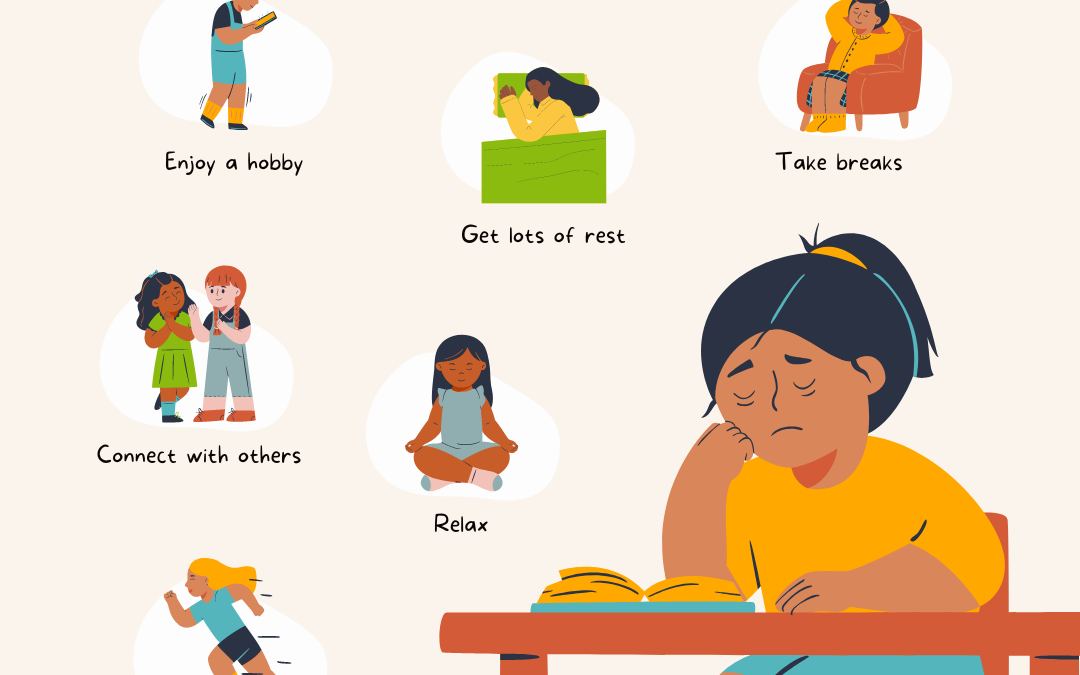Let’s be real – homeschooling is incredibly rewarding, and you chose to homeschool for valid and meaningful reasons. However, there are times when homeschooling can be really, really hard. You’re constantly juggling multiple responsibilities, from lesson planning to teaching to household chores, all while trying to keep your child engaged and motivated. Add to that many of us who also juggle jobs and other stressors. All of these factors can contribute to burnout and fatigue, which can manifest in different ways for different people. It’s important to acknowledge that this is normal and you aren’t alone.
Both parents and children can experience burnout and disengagement. Many children can check out and disengage during this time of the year. When asked about what they are learning, they might respond with “I don’t know” or “I forgot.” My HST asked my kids probing questions about what they have been learning recently, and they responded with “I don’t remember.” This can feel embarrassing, am I right? It’s essential to realize this type of response can be the result of burnout and not your skills as a home educator. Here are some tips I’ve gleaned over the years to help address burnout and disengagement in both parents and children:
Take breaks: Take breaks when you need them. Sometimes stepping away from the curriculum for a day or two can help you recharge your batteries and come back to your studies with a fresh perspective. It can also be beneficial to take breaks throughout the day or week to do something fun and relaxing with your child. Inevitably, learning will take place in sneaky and unconventional ways, even when the books are on the shelf. Sometimes a little break can help them regain their motivation and love for learning.
Reach out for support: Don’t be afraid to ask for help. Your HST, parent liaisons, our Lending Library team, and your community of fellow Cottonwood parents are your built-in support team. Join us on field trips, events, and at Parallel Learning Time. You don’t have to do this alone. There is purpose to the support systems in place at Cottonwood. We recognize the need for community and support, and we are here for you.
Practice self-care: Taking care of yourself is important. Make sure you’re getting enough sleep, exercising regularly, eating well, and doing things that bring you joy and relaxation. Remember: you can’t pour from an empty cup. Self-care may seem like a luxury, but it’s essential for your mental and emotional health. You are worth it! Modeling this for your children is hugely important. Attend Mindset Monday and SELF events to encourage a growth mindset and perseverance.
Set achievable goals: Setting achievable goals can help your child feel a sense of accomplishment and progress. Break down larger tasks into smaller, more manageable goals, and celebrate their successes along the way. Your HST can help you look at the big picture and help you find ways to simplify. My HST and I had this conversation and it took some pressure off of my shoulders and gave me permission to lighten the load while still meeting our goals and making progress.
Incorporate fun activities into the curriculum: Engage your child by incorporating fun and interactive activities into their studies. For example, turn a history lesson into a role-playing game or make a science experiment out of cooking. Better yet, incorporate project-based learning that they can share with their peers at the Science Fair, Makers Market, and International Festival. Events like these can be highly motivating and reignite their interest in learning.
Remember, homeschooling burnout and disengagement are normal, but addressing them is important before they become long-term issues. By taking a break, incorporating fun activities, setting achievable goals, and connecting with others, you can help yourself and your child regain motivation and love for learning.
Kindly,
Kara Parkins and the Community Team

